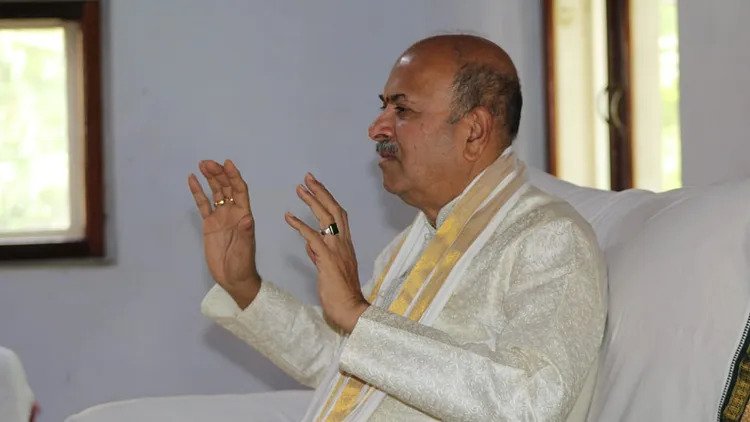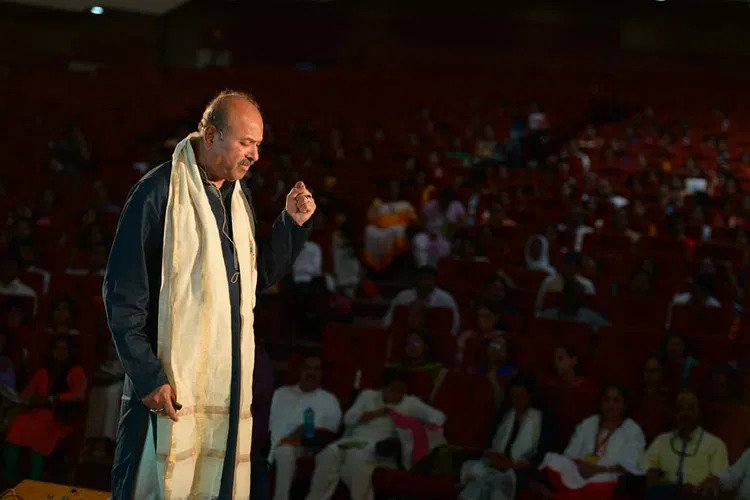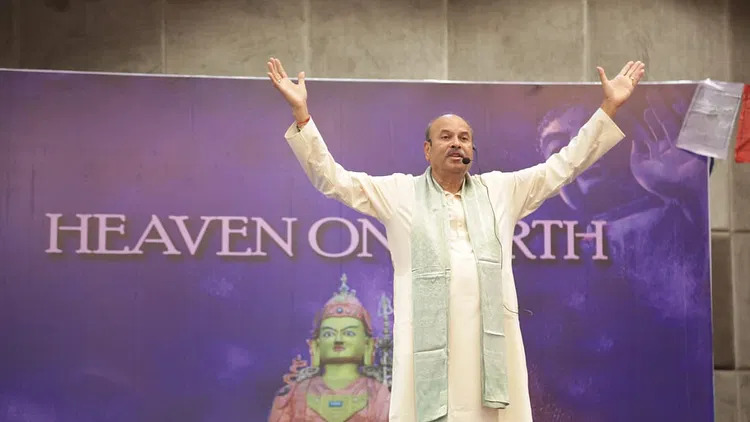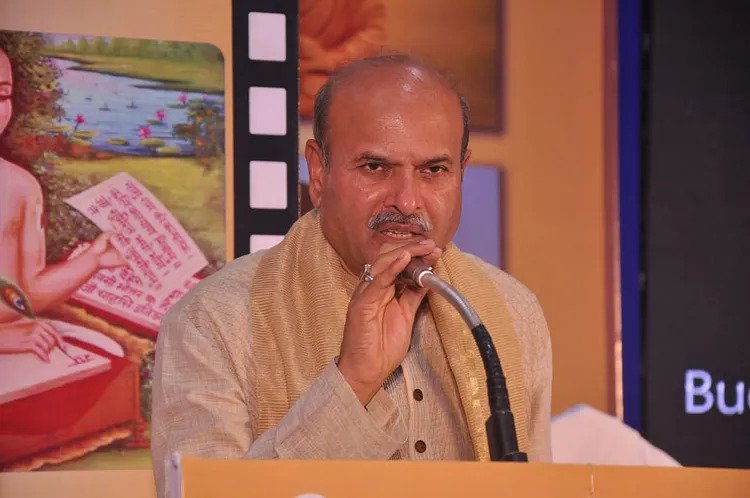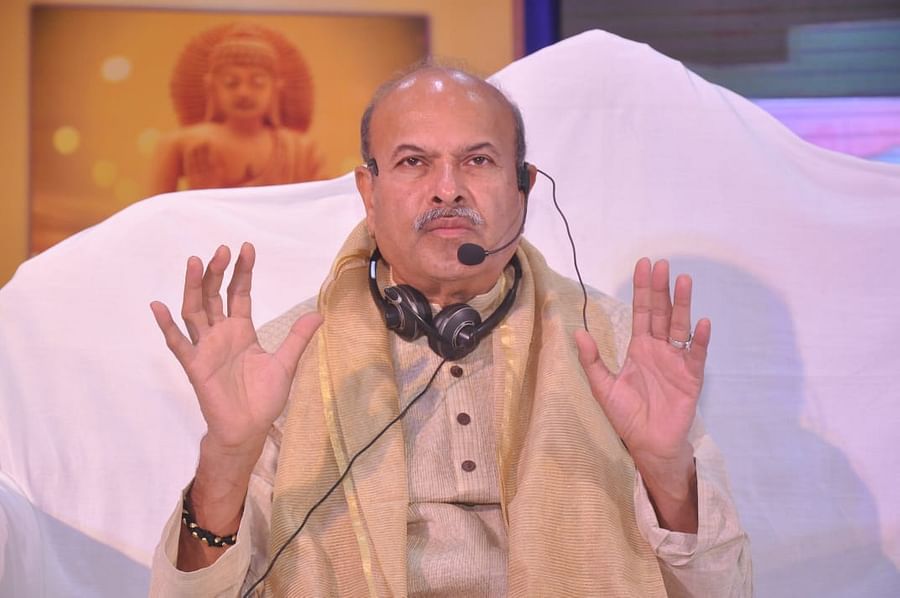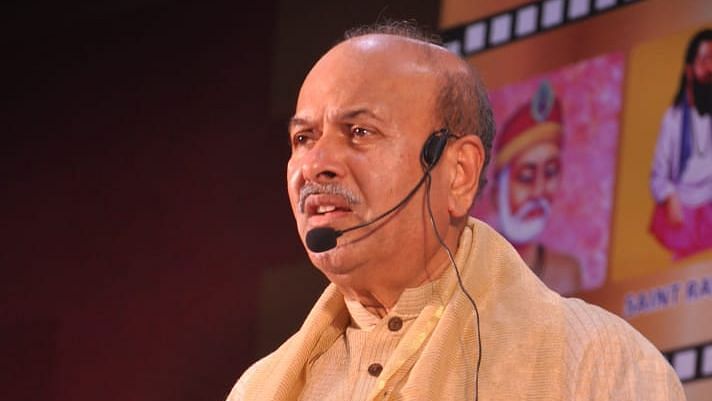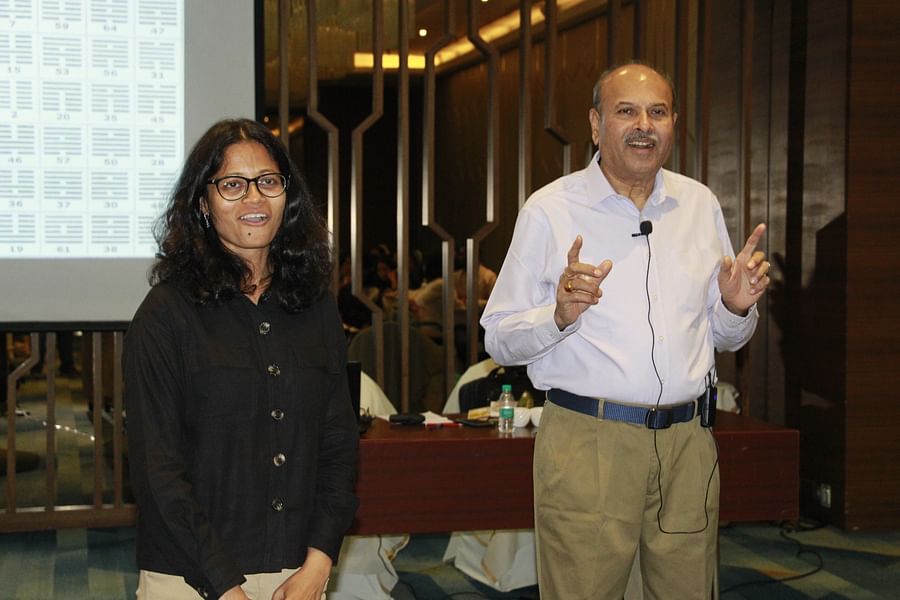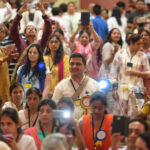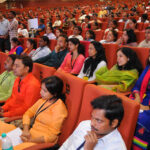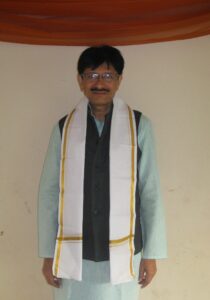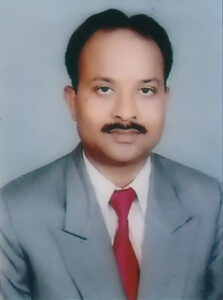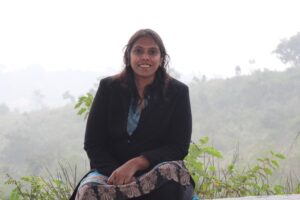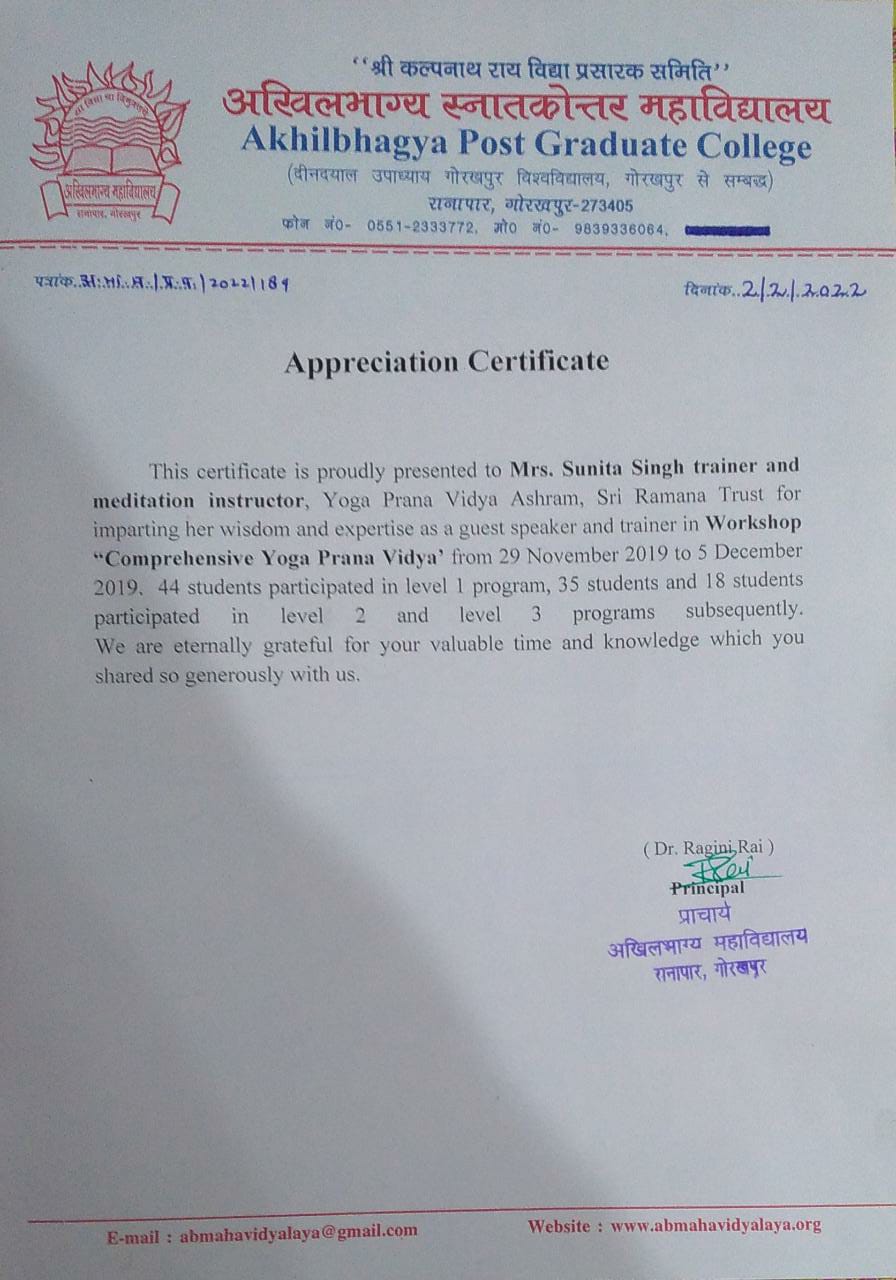Guru Poornima

This is an extract from a lecture on the Guru Poornima day, 5th July 2020, discussing about the various Gurus in the past and their teachings.
Guru Poornima is one of the most auspicious festivals celebrated by the Hindus, Buddhists and many other traditions. It is a day celebrated to pay our gratitude to all the spiritual and academic Teachers or Gurus who have helped dispel the darkness of ignorance from our minds, guided and upgraded us in many ways.
Guru Poornima is also referred to as Vyasa Poornima, to commemorate his birthday. Veda Vyasa is one of the most revered Gurus of the ancient times who has compiled the four Vedas, the sacred religious literature of the Hindus. He compiled and structured these teachings which already existed from the time immemorial.
on this special day of lecture Shri N. J. Reddy talks about many teachers/master – Jesus, Adi Shankara, Master Paul, Vivekananda, Guru Padmasambhava, Yogi Ramacharaka, Swami Sivananda Saraswati, Dakshinamurthy, Guru Govind Singh, Sri Ramana Maharishi, Mahavatar Babaji, Madme Blavatsky, Lord Dattatreya their teachings has been put up in very simple manner.
The main important pointers to take away, How to Select a Guru? Reverence and Respect to the Spiritual Guru? How a Guru develops another Guru? Practice of the Teachings? Dwell on all of the above deeply to do deeper Sadhana or intense Spiritual practices.
Also Read
We have the Jnana Kanda of Vedas called Vedanta in the form of Upanishads, Brahmasutras and Bhagavad Gita. Lord Krishna in Bhagavad Gita said, “I Am the OM” in the Vedas. This suggests that the Sound, the Word, the Syllable or the Aksharam (that which is indestructible or which has no beginning, end, is unborn or eternal) encompasses all the manifested and the un-manifested Reality.
The essence of each of the four Vedas is presented in the four profound statements of Mahavakyas which reveal the truth regarding Brahman, that everything is in “Him” and in everything is “He”. This very essence is exemplified in the Upanishads. We need a Teacher or a Guru to be able to grasp, comprehend and realise these teachings by sustained sadhana.
Vyasa embodied into diverse incarnations in Greece, Egypt and other places. He was the founder of Zoroastrianism, the religion associated with fire. He propagated the teachings of right thought (including right emotion), right speech and right action. Later, Vyasa personified as Shakyamuni Buddha and gave 4 noble truths and the 8-fold path. The one who compiled the Four Vedas, later handed the Four Noble Truths as his direct experienced Wisdom, as an absolute teaching devoid of any ifs and buts.
Also Read
4 Noble Truths – There are minor differences in the various interpretations of these noble truths. One of the most refined elucidations is presented here:
- There is dukha in life.
- There is cause for dukha.
- The dukkha ends by addressing the causes.
- There is a clear path by which the causes can be attended to. That is the noble 8-fold path:
- Right view point or accurate perception or Jnana Yoga
- Right thought
- Right speech
- Right action
- Right kind of livelihood and lifestyle
- Right Spiritual effort with one pointedness: This includes yama, niyama and pratyahara and all purification techniques.
- Right awareness: This is Dhyana or Meditation, to know oneself.
- Right oneness: Oneness with the Guru, with the Higher Soul, with the right Group and with the right Target.
Buddha stressed that if you are not saintly enough to love your enemy, then at least forgive and forget for the sake of your own health and happiness. He gave this teaching to a common man who is not a saint. You may affirm, “I forgive and forget for my own health and happiness.” What if you are unable to forgive and forget? You will then be chained to the person (for may be even incarnations) due to lack of forgiveness.
Also Read
For a saint, his consciousness is in the Intuitional plane all the time. He is in a state of oneness with all, i.e., no separation with anyone. Hence, for him there is no requirement of forgiveness. When forgiveness becomes your second nature, there is no need to specifically forgive. This is because, you would have become so compassionate that you would be radiating love to all without any exception. That is experiencing and exuding Divine Love!
Jesus, a very highly worshiped teacher of Christianity, who is also emulated as the incarnation of God, said, “Truly I tell you, the one who believes in me will also do the works that I do. And he will do even greater works than these, because I am going to the Father”. Jesus was a healer and hence, he will support the endeavours of Healing.
Adi Shankara, a very esteemed figure in the history of Indian philosophy, expounded the Advaita Vedanta and also revived and restructured the teachings of Upanishads, Brahma Sutras and many other scriptures elucidating the subtle meanings hidden in these teachings. He introduced the Atma Shatakam, which exemplifies, “I am Eternal”, “I am ONE”, that there is no duality, there is only Oneness. That was his state of development. And that is the target for a person on Spiritual path to achieve! He also imparted the Guru Ashtakam, the path by which one can achieve the Spiritual target. He established these and many other doctrines, poems and commentaries.
The teaching of Master Paul, channelled through Master Hilarian, in the book, “The Light on Path”, says, “Kill out ambition (self-ambition), but work as those who are ambitious (for the Divine Plan)”. It indicates to you not to become dull by killing ambition. You are born to manifest your greatness. Divine Love is the intense desire for executing the purpose; not for self, but for others. You are uplifted and strengthened, so that you can uplift others.
Only one Vivekananda was needed to spread the teachings and wisdom of Ramakrishna Paramahansa. Only a few fully dedicated students are enough to manifest the targets of the Guru.
Also Read
The Guru of a Himalayan Master calls him once and expresses, “Good News is that you achieved Soul realization! Now run away from here, before others get to know and kill you”. (This is because he came much later than other students to that school, and others could not still achieve the result). So, jealous among the sadhaks is inevitable. You must watch out for jealous or fear that arises due to will within you. Internally, you may not want others to be better than you. Generate successful students and help others grow. Be happy with their success.
Guru Padmasambhava who was Lord Rama and a high Priest named Nefertem in some of his previous incarnations, has evolved many systems. He was born illumined and was known as the Vajra Guru. He propagated the Vajrayana tradition. His senior most disciple, Chohan Jig Mei Lingpa compiled the Nyingmapa tradition which contained the highest teachings at that point of time. These teachings are integrated in the present Yoga Prana Vidya (YPV) system and Arhat Yoga.
Guru Padmasambhava pointed out that if you want to know your past, take a look at your present condition. And if you want to know your future, check your present actions. So, reflect on what you are doing now.
Yogi Ramacharaka, a pseudonym of one of the religious leaders of America, William Walker Atkinson, has presented his scientific deep study on the importance of physical exercises, breathing exercises, diet and healing. These are steps towards proper, safer and deeper union with the Higher or real Yoga. Following his book on “Hatha Yoga” can help you become a Paramahansa.
Each Guru takes you up using either Karma Yoga, Jnana Yoga, Bhakti Yoga, Raja Yoga, etc. In YPV and Arhat Yoga, all these yogas are integrated, making it one of the most advanced, integrated and holistic systems of the present times.
Swami Sivananda Saraswati, a renowned spiritual teacher, had alleged that attainment of a qualified Guru is the only means to realising Jnana. He suggested that there is no difference between Guru and Atma Jnana. If you do not find a Guru, then try to follow or analyse the teachings of some Great Ones, like, Adi Shankara, Dattatreya, Dakshinamurthy, etc.
Dakshinamurthy, an avatar of Lord Shiva, who is respected as a Guru of all types of knowledge, focussed his teaching on purification. He is seen with the Chin Mudra and facing the southern direction. Each of the little, ring and middle fingers represent eternal Ananda or bliss, eternal Chit or consciousness and Sat which means true eternal existence. The thumb and the index finger in the mudra, represent the Supreme God who is unmanifest (thumb) and in manifestation (index finger); united as One! So, the mudra implies, the Supreme God when manifests is a Sat-Chit-Ananda swarupa – Also, Sat (lower aspect is physical), Chit (lower aspect is mind), Ananda (peace and bliss at lower levels experienced at emotional level)!
Guru Govind Singh, a warrior and one of the famous spiritual Sikh Guru’s, had demonstrated the path of progress by sacrifice and service. Prophet Muhammed, the founder of Islam, also promoted the path of sacrifice and service.
Sri Ramana Maharishi, one of the famous sages, had revealed the path of self-enquiry as the ultimate practice or direct meditation. When someone asked Ramana Maharishi, about how to deal with others, he exclaimed, “THERE ARE NO OTHERS!”. He could make such a profound statement, as he was always in oneness with the higher self and oneness with all. He urged people to reflect within, “Who am I?” so that they can have a direct experience of their self. He described the state beyond Turiya (that is, beyond the Intuitional plane), as higher Samadhi. He illustrated the ultimate Sahaja Nirvikalpa Samadhi!
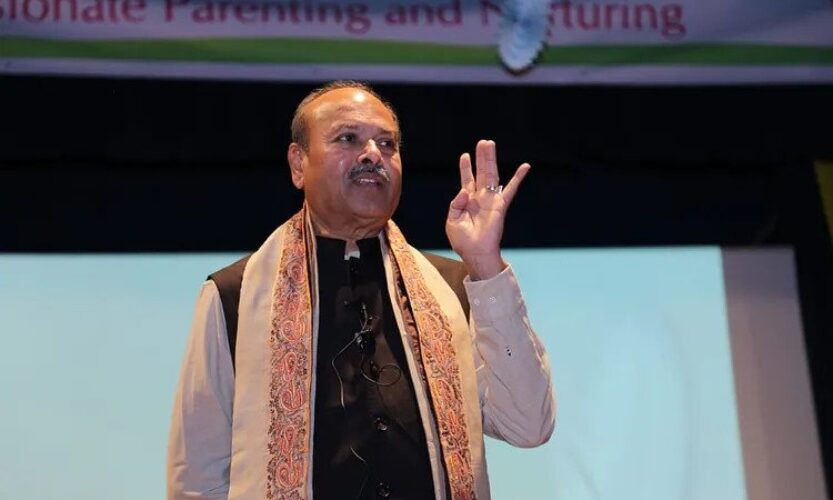
Also Read
Mahavatar Babaji and his lineage of disciples, Sri Lahiri Mahasaya, Sri Yukteshwara Giri and Paramahamsa Yogananda have propagated Kriya yoga, which was considered an exalted form of yoga at that time.
Madme Blavatsky, a Holy Master and a co-founder of Theosophical Society, authored some remarkable works; one of them being “The Voice of Silence”. In this book, the last and the 7th portal is termed as Prajnya, which is beyond the Intuitional plane; it is experienced at the Atmic plane. Prajnya is the complete focus on the Divine target and nothing else. The moment to moment jnana while working is Prajnya.
Lord Dattatreya was adored as an exceptional Guru who reached self-actualization by observing and learning from nature and others. He was ONE with everyone and everything; thus, he acquired knowledge from all. Consequently, he became Guru for the whole world and made a name of Vishwa Guru.
He gathered from the free-flowing air to be de-attached. Air moves in any direction; It has a property of diffusion; any poisonous gas can get diffused. Relatedly, any volatile or difficult situation can be diffused by harmonising the conflicting factors. Thus, you may learn from air to diffuse!
Water in the river flows towards the ocean. It doesn’t get stuck; it flows left or right; above or under, in order to stream towards destination. It dissolves impurities and carries energy. Hence it is a great purifier and restorer! It has a property of expansion at solidification point. This makes ice float up instead of sinking down, enabling life to survive in glaciers in cold temperatures. We may learn to flow like river towards the target and not get stuck with obstacles. Like water we must learn to purify and restore, we must heal.
Ocean has so much water because it is lower than the river. It demonstrates humbleness, like a Teacher, who is incredibly humble. In order to merge with the Guru, be humble and flow down like a river. Also, have good self-esteem.
Earth is a great conductor of electricity. With one positive terminal, you can create negative terminal anywhere on Earth to help a light bulb glow. Thereby, Earth instils receptivity. It also inculcates patience and tolerance since it provides you with what you require and accepts what you throw to recycle.
Fire consumes everything. It burns negativities and purifies.
Akasha is all pervading; entire manifestation is floating in it. It has no boundaries and is limitless. So, meditate and expand; achieve greater and greater Oneness!
Sun bestows Prana in different planes and to all alike. The manifested Brahman is the Sun for us on Earth. You may learn to radiate like Sun, which suggests you become a Teacher.
Ants exhibit group work. Compare the size of an ant to its ant hill. In a group you are protected. Your mental blind spots are covered by others strengths. When you practice meditations in a group, the higher beings are forced to appear!
How to Select a Guru?
Check if he is clarifying your doubts? Are you experiencing peace in his presence? Are you getting guidance to your issues? Do not blindly select a Guru. Do not focus on their physical status, outer appearance, attire or personal life. Lay emphasis on their instruction, validate and internalise their teachings.
Reverence and Respect to the Spiritual Guru
People show reverence and appear to show respect to the Gurus by bowing in front of them or touching their feet. However, to show respect to the Guru is to check what he wants you to do. What is his purpose? Real respect means you simply follow all his instruction, not selectively, but all. Do not modify them to suit your comfort or perception.
You cannot be rude with the Teacher while asking questions. Learn to be humble first. Ask your questions, but with respect; with the intention to seek clarification for more details. You must seek clarifications again and again. But be humble.
Also Read
How a Guru develops another Guru?
An example of this can be seen in the story of the sage Yajnavalkya, who was known for his unmatched spiritual wisdom. His Guru was Vaishampayana. The Guru teaches many students along with Yajnavalkya. After imparting all the teachings of Yajur veda, the Guru realises that all his students were not receptive enough to grasp them all. However, Yajnavalkya comprehends most of it. So, the Guru probes Yagnavalkya to check if he understood everything. To which Yajnavalkya reports that he did. Then the Guru questions him if other students absorbed the teachings too? Yajnavalkya tells him that they may not have known it all. The Guru further demands what he was doing if others didn’t learn? Yajnavalkya reacts to this while exclaiming what could he do if others couldn’t follow. The Guru gets annoyed at this impudent attitude and asks Yajnyavalkya to give back all that he learnt from him. Upon such orders from the Guru, Yajnavalkya at once vomits out all the teachings. The other students, under the directive of the Guru, become Tittiri birds or sparrows and eat all the collection of wisdom. Hence, this teaching came to be known as Taittiriya Upanishad. So, Yajnavalkya repeats the teachings in the Guru’s presence, while others pick it in bits and pieces like the industrious and focussed sparrows. Subsequently, Yajnavalkya becomes a Guru. The story signifies that when you understand certain knowledge, you must discuss and share it with others. Further, you must propagate what you have learnt and multiply.
Practice of the Teachings
Truth must be available, like, water and air to everyone. People are thirsty for deeper Truth. You must realise that you are the Soul, a part of God – pure and eternal and not these perishable bodies. And so is everyone else; everyone is essentially Divine. Hence, you are your own Vidhatha, creator of your own destiny. You are the decreer of your own Karma!
People think that karma is fatalistic or fixed. But you must recognise that future is dynamic and you have the free will. Therefore, karma is actually an instrument for your evolution.
The moment you recognise that you are a soul with bodies, you experience bliss! Therefore, meditation is required to experience it by going beyond the bodies or mind.
The very purpose of incarnating into the lower bodies of physical, emotional and mental is to become a greater servant of the Planetary God. To achieve that objective, regular practice, purification (physical and inner purification) and discernment are imperative. Undertake this work by aligning with a right Group, becoming an asset for the Group and upgrading continually.
Dwell on all of the above deeply to do deeper Sadhana or intense Spiritual practices.
You may try our YPV Sadhana app, which is available for free in various languages. It has guided tracks for purification through breathing exercises and forgiveness practice; and Planetary Peace meditation. These techniques also help in strengthening and upgrading your immune system.
Also Read
YPV Sadhana App
Download YPV Sadhana app to boost immunity, emotional balance and positive attitude towards life.
Yoga Prana Vidya Ashram Sri Ramana Trust Hosur – Thally Main Road Near Ubbanur Lake Thally, Krishnagiri Dist Tamil Nadu – 635118, INDIA
Contacts
Disclaimer :
Yoga Prana Vidya is not intended to replace other forms of healing modalities including allopathy and it is also complementary including alternative.
In case of Severe or Persisting symptoms, refer to a medical doctor and or a Certified Yoga Prana Vidya Healer.
“Currently we do not have any connection / affiliation / association with and are not authorised / represented / endorsed / certified / maintained / sponsored by Master Choa Kok Sui and/or organisations established by the Master and/or subsidiaries / affiliates of such organisations.”
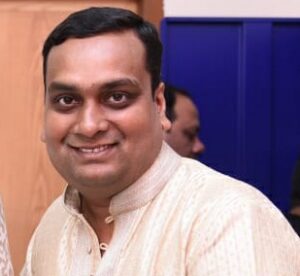
Dhaval Dholakia is a certified YPV healer for 16 years. He is also a mechanical engineer and has worked in Plastic Processing Machinery for 25 years. He resides in Ahmedabad.
Dr. S. K. Singh is a Arhat Trainer having more than 20 years of YPV healing and teaching experience. He is also trained in Kriyashakti & Fengsui and completed the one year intensive program in 2016. He has organized many higher level YPV training workshops and retreats. He completed his Master’s degree in Science and has a doctorate in Environmental Biology. He hails from Varanasi.
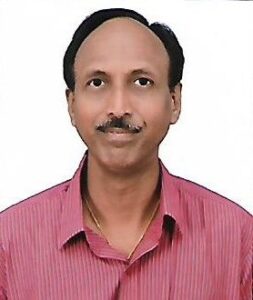
Madhu Sudhir is a senior YPV trainer since 2004. She has trained over 2500 students and more than 50 trainers who are also propagating YPV practices. She has done YPV healing for more than 7000 people since 2006. She is the secretary of the Mysore YPV Healers Association since 2011. She is also associated with JSS University – Dental College as a guest lecturer for “Holistic wellness through YPV” for BDS 1st year students. She has also conducted various seminars on YPV teachings. She graduated in commerce from Bangalore University and also has a diploma in architecture. She also works as a Vaastu consultant for businesses, constructions, plots & houses.
Raghu N is a Arhat Trainer having over 22 years of YPV healing and teaching experience. He founded “Master YPV Trust Nanjangud” in 2019 and conducting regular service activities through this trust in his role as President. He also started the first independently located YPV centre in Nanjangud in 2014. He has previously attended the one year Spiritual Intensive Program for 2015-16 conducted in Sri Ramana Trust Ashram. He also has 7 years of experience working as a secretary at “Mysore YPV Healers Association” during which he nurtured many healers. Raghu conducts teachings in Kannada, English and Hindi languages. He has also completed a B.Sc. and B.Ed. from the Mysore University.
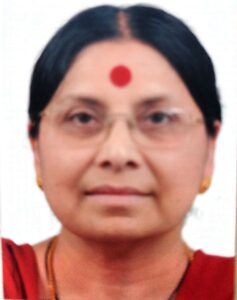
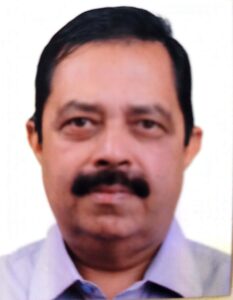
1: Name : Lakhsmi Devi

1. Name – Vishakha Karnani
2. address/ centre – 316, Sai Kripa Colony,
Indore 452002, Madhya Pradesh
3. educational qualification – B.A. Loreto College, Kolkata. Then worked as a photo journalist & a freelancer (children photography)
4. any paper presentation – COVID 19 case report in Innovative publication journal. July 2020
5. any specific achievements – part of the organising team in the first SIP , Pune, 2015. Thereafter involved in organising public darshan and Compassionate Parenting and nurturing programs in various cities like Indore, Nagpur, Raipur, Pune, Kolkata and Ichalkaranji (kolhapur)
6. Since 2006. Got introduced to the world of energy in Kolkata and shifted to Indore in 2008 to spread the work in Central India. Currently working in M.P, Chattisgarh, Maharashtra, Rajasthan, North East India.
Radha Ganesh is presently working for Yoga Prana Vidya Organization as Senior Arhat trainer and Ethics committee member. She is a Senior Arhat Trainer and certified YPV healer with over 18 years of experience. She completed the one-year spiritual intensive program at the YPV ashram in Thally. She has been trained in basic, advanced healing and psychotherapy at World Pranic Healing. Radha worked in Unnathi Healing Foundation Trust as a healer and trainer. She also worked in MS Ramaiiah Hospital Pranic Healing Department, Ayush Arogya Dhama. She has taught YPV teachings in several schools and also conducted classes for nursing staff, pharma students among others. She regularly conducts an Arhat Marathon on every last Sunday of the month at Karnataka Pranic Healing foundation trust since last 3 years. Radha has completed her M.A. in English from MG University, Kerala.
Yoga Prana Vidya
| Account Name : | Sri Ramana Trust |
| A/C No: | 566438417 |
| Name of Bank: | Indian Bank |
| IFSC Code: | IDIB000T060 |
| Address: | Police Station Road, Thally, Krishnagiri |


